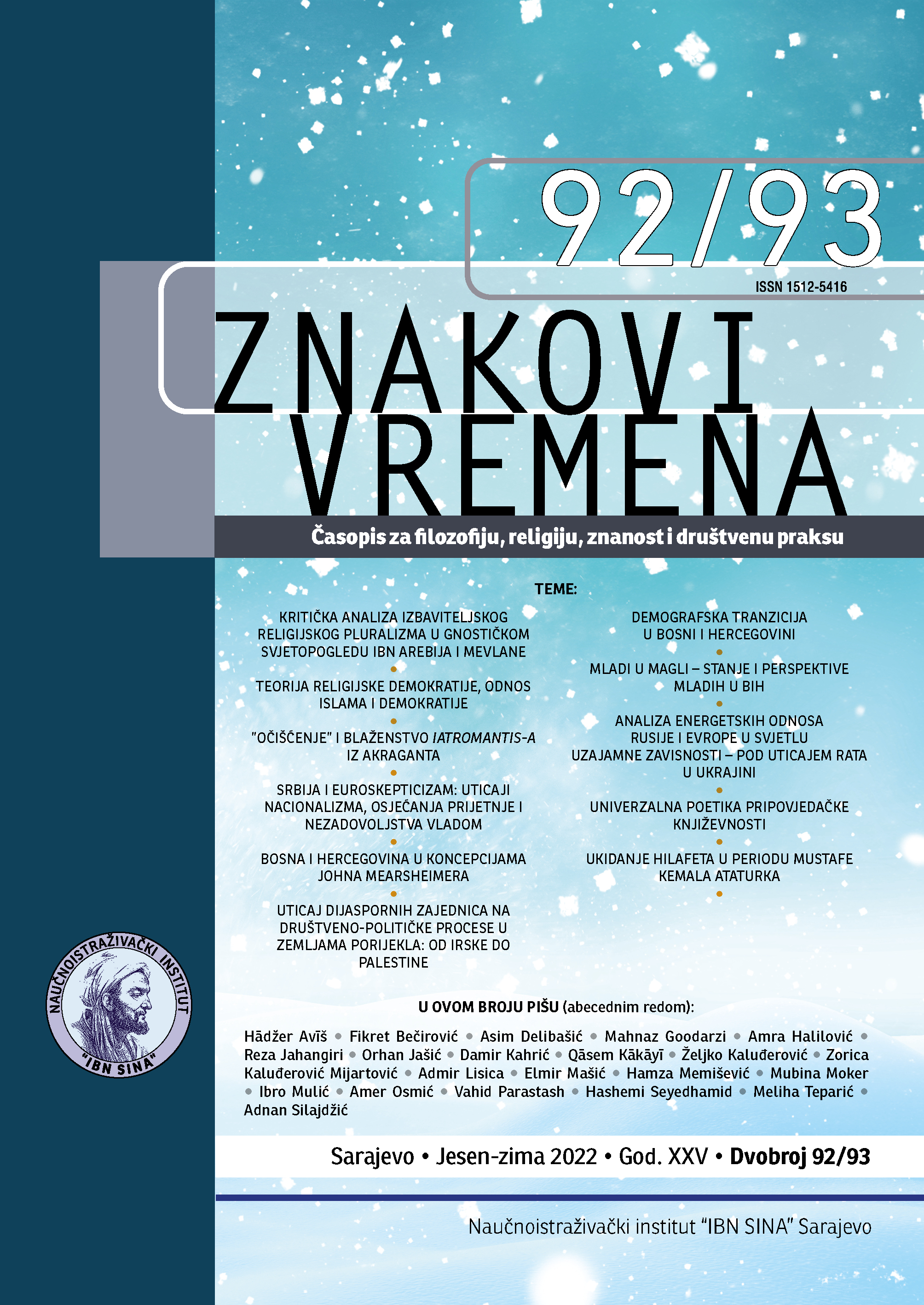Demografska tranzicija u Bosni i Hercegovini
Demographic Transition in Bosnia and Herzegovina
Author(s): Fikret BečirovićSubject(s): Politics / Political Sciences, Demography and human biology, Politics and Identity
Published by: Naučnoistraživački institut »Ibn Sina«
Keywords: Demographic Transition; Heterogenic Population; Economic Reconstruction; Industrialisation; Urbanisation; Modernisation;
Summary/Abstract: The key identity of Bosnia and Herzegovina throughout history was made by her heterogenic population. The geographical marks, natural resources, strategic position, and turbulent historical events, continuities and discontinuities, strongly directed her demographic structure, upon which her entire development rested. Due to tumultuous events from the East and the West, changes in the demographic structure occurred as the result of the complex historical framework and the level of development of the production forces and production relations. In that context, the process of demographic transition was made, as important changes of consciousness within the sphere of birthrate (fertility), in the sense of conscious and controlled family planning. The demographic transition, as one of the key theories of the demographic science, was first explained by Adolphe Landry in 1909, the French demographist and economist, who found that the growth of population is in fact a staged process dictated by the socio-economic and cultural development going through three stages: primitive, intermediary and modern. By examining the economic factors influencing the society, Landry concludes that the level of productiveness and the positive birthrate are the most important factors in the societal development, dubbing his theory as “The Theory of Demographic Revolution”.
Journal: Znakovi vremena - Časopis za filozofiju, religiju, znanost i društvenu praksu
- Issue Year: XXV/2022
- Issue No: 92/93
- Page Range: 115-132
- Page Count: 18
- Language: Bosnian

